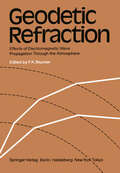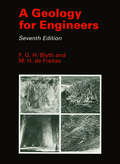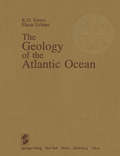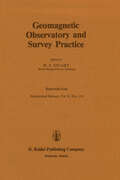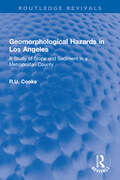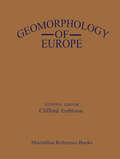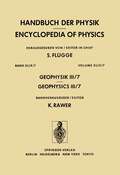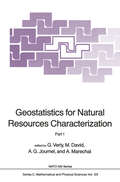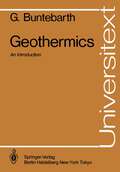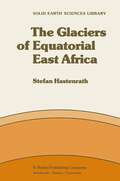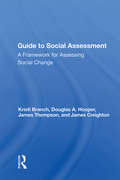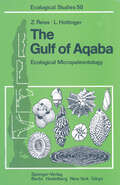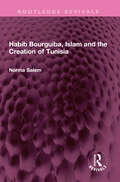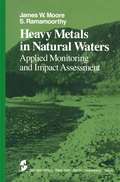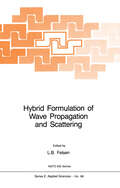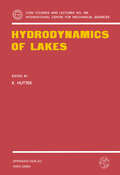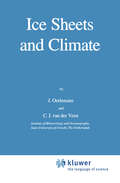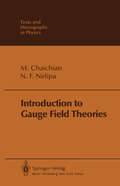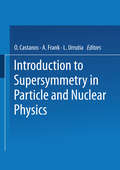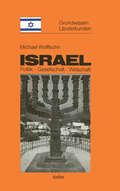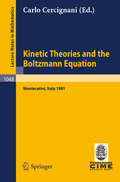- Table View
- List View
Geodetic Refraction: Effects of Electromagnetic Wave Propagation Through the Atmosphere
by F. K. BrunnerWith very few exceptions, geodetic measurements use electro magnetic radiation in order to measure directions, distances, time delays, and Doppler frequency shifts, to name the main ter restrial and space observables. Depending on the wavelength of the radiation and the purpose of the measurements, the follow ing parameters of the electromagnetic wave are measured: ampli tude, phase, angle-of-arrival, polarisation and frequency. Ac curate corrections have to be applied to the measurements in order to take into account the effects of the intervening medium between transmitter and receiver. The known solutions use at mospheric models, special observation programs, remote sensing techniques and instrumental methods. It has been shown that the effects of the earth's atmospheric envelope present a fundamental limitation to the accuracy and precision of geodetic measurements. This applies equally to ter restrial and space applications. Instrumental accuracies are al ready below the atmospherically induced limitations, and thus the accuracy demands on the geodetic refraction solutions are entering a new magnitude zone. This monograph is primarily devoted to the properties of the at mospheric effects on various geodetic measurements and to their evaluation. Ten review papers cover the most pressing aspects of the atmospheric effects on geodetic measurement~. Ttiese state of-the art papers were written by eminent specialists in their respective research fields.
A Geology for Engineers
by F.G.H. Blyth Michael de FreitasNo engineering structure can be built on the ground or within it without the influence of geology being experienced by the engineer. Yet geology is an ancillary subject to students of engineering and it is therefore essential that their training is supported by a concise, reliable and usable text on geology and its relationship to engineering. In this book all the fundamental aspects of geology are described and explained, but within the limits thought suitable for engineers. It describes the structure of the earth and the operation of its internal processes, together with the geological processes that shape the earth and produce its rocks and soils. It also details the commonly occurring types of rock and soil, and many types of geological structure and geological maps. Care has been taken to focus on the relationship between geology and geomechanics, so emphasis has been placed on the geological processes that bear directly upon the composition, structure and mechanics of soil and rocks, and on the movement of groundwater. The descriptions of geological processes and their products are used as the basis for explaining why it is important to investigate the ground, and to show how the investigations may be conducted at ground level and underground. Specific instruction is provided on the relationship between geology and many common activities undertaken when engineering in rock and soil.
A Geology for Engineers, Seventh Edition
by F.G.H. Blyth Michael De FreitasNo engineering structure can be built on the ground or within it without the influence of geology being experienced by the engineer. Yet geology is an ancillary subject to students of engineering and it is therefore essential that their training is supported by a concise, reliable and usable text on geology and its relationship to engineering. In this book all the fundamental aspects of geology are described and explained, but within the limits thought suitable for engineers. It describes the structure of the earth and the operation of its internal processes, together with the geological processes that shape the earth and produce its rocks and soils. It also details the commonly occurring types of rock and soil, and many types of geological structure and geological maps. Care has been taken to focus on the relationship between geology and geomechanics, so emphasis has been placed on the geological processes that bear directly upon the composition, structure and mechanics of soil and rocks, and on the movement of groundwater. The descriptions of geological processes and their products are used as the basis for explaining why it is important to investigate the ground, and to show how the investigations may be conducted at ground level and underground. Specific instruction is provided on the relationship between geology and many common activities undertaken when engineering in rock and soil.
The Geology of the Atlantic Ocean
by Kenneth O. Emery Elazar UchupiThe explosion of interest, effort, and information about the ocean since about 1950 has produced many thousand scientific articles and many hun dred books. In fact, the outpouring has been so large that authors have been unable to read much of what has been published, so they have tended to concentrate their own work within smaller and smaller subfields of oceanog raphy. Summaries of information published in books have taken two main paths. One is the grouping of separately authored chapters into symposia type books, with their inevitable overlaps and gaps between chapters. The other is production of lightly researched books containing drawings and tables from previous pUblications, with due credit given but showing assem bly-line writing with little penetration of the unknown. Only a few books have combined new and previous data and thoughts into new maps and syntheses that relate the contributions of observed biological, chemical, geological, and physical processes to solve broad problems associated with the shape, composition, and history of the oceans. Such a broad synthesis is the objective of this book, in which we tried to bring together many of the pieces of research that were deemed to be of manageable size by their originators. The composite may form a sort of plateau above which later studies can rise, possibly benefited by our assem bly of data in the form of new maps and figures.
Geomagnetic Observatory and Survey Practice
by W. F. StuartThis issue is a collection of the papers read at the 'Workshop on Geomagnetic Observatory and Survey Practice' held during the XIVth General Assembly of IUGG (the International Union of Geology and Geophysics) in Hamburg, August 1983, sponsored by Division V of the International Association of Geomagnetism and Aeronomy (IAGA). The papers represent a snapshot taken at a very important time in the history of Geomagnetism and of the sciences which depend on measurements of one kind or another of the Earth's magnetic field. Research science now demands a much greater amount of information to be prepared and immediately made available to the scientific user. Experimental measurements are now required to be reduced, selected and made ready as information which can be recorded as data on magnetic tape in the form required for direct incorporation into the analytical programmes whiCh individual researchers run on digital computers. Computing has reduced the lead time between when observations are made and when they are required by researchers. Many scientific programmes, particularly those related to Solar-terrestrial geophysics, need data to be analysed as near as possible to the time it is recorded. In Geomagnetism these pressures apply to field variations where satellite based geophysical experiments require high resolution of the fine structure of external disturbance fields, and also to field mapping on a global and local scale where the demand for increased accuracy calls for better absolute observations and more frequent surveys.
Geomorphological Hazards in Los Angeles: A Study of Slope and Sediment in a Metropolitan County (Routledge Revivals)
by R.U. CookeThis book, first published in 1984, deals authoritatively with the nature and management of slope failures and sediment movement and their impact on the hazardous landscape of Los Angeles county. Bringing together for the first time a wide range of information derived from field observations, interviews, manuscript records, local agency reports and published sources, the book presents an analysis of the ways in which a rapidly developing metropolis has come to terms with complex geomorphological hazards. In particular, the events accompanying the major storms of 1914, 1934, 1969 and 1978 are reconstructed in detail.
Geomorphological Hazards in Los Angeles: A Study of Slope and Sediment in a Metropolitan County (Routledge Revivals)
by R.U. CookeThis book, first published in 1984, deals authoritatively with the nature and management of slope failures and sediment movement and their impact on the hazardous landscape of Los Angeles county. Bringing together for the first time a wide range of information derived from field observations, interviews, manuscript records, local agency reports and published sources, the book presents an analysis of the ways in which a rapidly developing metropolis has come to terms with complex geomorphological hazards. In particular, the events accompanying the major storms of 1914, 1934, 1969 and 1978 are reconstructed in detail.
Geophysik III / Geophysics III (Handbuch der Physik Encyclopedia of Physics #10 / 49 / 7)
by G. Schmidtke K. Suchy K. RawerThis Encyclopedia aims, basically, at summanzmg the wealth of well established facts and outlining the relevant theories in the different branches of physics. With this as goal, the writers were asked to present their specific field in such a way that access is possible to any scientist without special a priori information in that field; the basic concepts of physics are assumed to be known to the reader. The survey given in each paper was also to be long lasting, so that even a few years after publication, each volume would be useful, for example as an introduction for newcomers or as a source of information for workers in a neighbouring field. In the field of geophysics, dealt with in Vols. 47--49 of the Encyclopedia, this task is difficult to achieve because during the last decades there has been a much faster development of basic information and theory than during the decades before. When I came to contribute to this work the famous Julius Bartels, then editor of the geophysical part, told me that Vol. 49 should certainly take into account the results of the "International Geophysical Year" 1957/58 (I. G. Y. ), and that we had better wait until these were accessible than produce a kind of information which might be obsolete in a short time.
Geostatistics for Natural Resources Characterization: Part 1 (Nato Science Series C: #122)
by Georges Verly Michel David Andre G. Journel Alain MarechalGeothermics: An Introduction (Universitext)
by G. BuntebarthThe constantly growing demand for energy, as well as the realization during the past decade that fossil energy reserves to satisfy ever increasing energy consumption are limited, have helped, as part of the search for alternative energy sources, to bring the subject of geothermics to its present level of significance. Practical geothermics is concerned with prospecting for and develop ment of geothermal heat. General geothermics deals with the thermal state of our Earth as a whole. Both divisions of this field, however, contribute practical insights, and improved methods of temperature esti mation have helped to give us a better picture of detailed thermal condi tions. It is difficult for readers interested in this field to obtain an overview from the numerous, specialized papers that have been written on geother mics. This book is meant to provide a thorough introduction to the subject, although the coverage is not exhaustive is detail. Geothermics is taught at universities and technical institutes, as part of the curriculum in geology. This introduction to geothermics is directed especially to students of geophysics and is meant to be used as a supple ment to their lectures. of this work must be given to my Special thanks for the completion teacher, Prof. Dr. O. ROSENBACH. His lectures in geophysics inspired my interest in geothermics, which is still my main research area.
Guide To Social Impact Assessment: A Framework For Assessing Social Change
by Kristi BranchDesigned to provide clear and detailed assistance in the complex process of assessing social change, this book emphasizes the development of an analytic approach and a theoretical framework that can be applied to the assessment of very diverse events--changes in the natural environment, the local economy, or the dominant technology. The guide, based on a sociological perspective that highlights the importance of community social organization in analyzing social change, focuses on the development of user skills in assessment design, research, analysis, and presentation. The guide's theoretical basis and emphasis on the interrelationships that create social change make it valuable to those studying social change in general, as well as to those responsible for conducting or utilizing social impact assessments. Detailed "how to" information, clear writing, and careful design impart the skills necessary to identify and analyze the factors and processes leading to social change and to interpret and present research findings in an effective manner.
Guide To Social Impact Assessment: A Framework For Assessing Social Change
by Kristi BranchDesigned to provide clear and detailed assistance in the complex process of assessing social change, this book emphasizes the development of an analytic approach and a theoretical framework that can be applied to the assessment of very diverse events--changes in the natural environment, the local economy, or the dominant technology. The guide, based on a sociological perspective that highlights the importance of community social organization in analyzing social change, focuses on the development of user skills in assessment design, research, analysis, and presentation. The guide's theoretical basis and emphasis on the interrelationships that create social change make it valuable to those studying social change in general, as well as to those responsible for conducting or utilizing social impact assessments. Detailed "how to" information, clear writing, and careful design impart the skills necessary to identify and analyze the factors and processes leading to social change and to interpret and present research findings in an effective manner.
The Gulf of Aqaba: Ecological Micropaleontology (Ecological Studies #50)
by Zeev Reiss Lukas HottingerThe reconstruction of ancient marine environments is an important task of the Earth Sciences, of great interest to geology, pure and applied, to oceanography and climatology, as well as to such fields as ecology and evolution. In principle, such reconstructions are based on the actualistic approach of "the present is the key to the past." Since the deciphering of past environmental changes, either nat ural or man-made, has considerable bearing on planning, the past may provide a key to the future. Paleoenvironmental interpretations in the marine realm are based to a great extent on assemblages of fossils recovered from ancient sediments in outcrops and from land-based or submarine drillings. Observable lateral sequences of assemblages in contemporaneous strata, the known or assumed functional or adaptive significance of preserved skeletal struc tures, as well as their evolution through time and space, provide by themselves indications of ancient environmental settings. In some cases even present-day eco logical considerations may be derived from analysis of fossils.
Habib Bourguiba, Islam and the Creation of Tunisia (Routledge Revivals)
by Norma SalemFirst published in 1984, Habib Bourguiba, Islam and the Creation of Tunisia is a study of Habib Bourguiba, the founder of independent Tunisia, that argues that Islam played a vital role in the development of the Tunisian nationalist movement. This book is therefore both a biography of the Tunisian leader and a discussion of the role of Islam as the key to legitimacy throughout the Arab world. The author argues that Islam was such a fundamental component in defining the specificity of the Tunisian nation that even Bourguiba, the most secular of Arab leaders, could not shed the Arab-Islamic heritage of Tunisia. Instead, he used Islam as a principle mode of communication to mobilise the Tunisian masses. This book will be of interest to students of African studies, history, political science and religion.
Habib Bourguiba, Islam and the Creation of Tunisia (Routledge Revivals)
by Norma SalemFirst published in 1984, Habib Bourguiba, Islam and the Creation of Tunisia is a study of Habib Bourguiba, the founder of independent Tunisia, that argues that Islam played a vital role in the development of the Tunisian nationalist movement. This book is therefore both a biography of the Tunisian leader and a discussion of the role of Islam as the key to legitimacy throughout the Arab world. The author argues that Islam was such a fundamental component in defining the specificity of the Tunisian nation that even Bourguiba, the most secular of Arab leaders, could not shed the Arab-Islamic heritage of Tunisia. Instead, he used Islam as a principle mode of communication to mobilise the Tunisian masses. This book will be of interest to students of African studies, history, political science and religion.
Heavy Metals in Natural Waters: Applied Monitoring and Impact Assessment (Springer Series on Environmental Management)
by J.W. Moore S. RamamoorthyThis series is dedicated to serving the growing community of scholars and practitioners concerned with the principles and applications of environ mental management. Each volume is a thorough treatment of a specific topic of importance for proper management practices. A fundamental objective of these books is to help the reader discern and implement man's stewardship of our environment and the world's renewable re sources. For we must strive to understand the relationship between man and nature, act to bring harmony to it, and nurture an environment that is both stable and productive. These objectives have often eluded us because the pursuit of other individual and societal goals has diverted us from a course of living in balance with the environment. At times, therefore, the environmental manager may have to exert restrictive control, which is usually best applied to man, not nature. Attempts to alter or harness nature have often failed or backfired, as exemplified by the results of imprudent use of herbicides, fertilizers, water, and other agents. Each book in this series will shed light on the fundamental and applied aspects of environmental management. It is hoped that each will help solve a practical and serious environmental problem.
Hybrid Formulation of Wave Propagation and Scattering (NATO Science Series E: #86)
by L. B. FelsenThe Workshop on Hybrid Formulations of Wave Propagat~on and Scattering underwent a sequence of iterations before emerging in the format recorded here. These iterations were caused by various administrative and logistical problems which need not be detailed. However, its direction being set initially, the iterations led to modifications of the original concept so that the final form was arrived at through an indirect approach. This circumstance may ex plain some possible deficiencies which might have been removed, had the final concept been implemented directly. The motivation arose from a perception that the newly restored interest, coupled with new developments, in hybrid methods employ ing progressing wave fields and oscillatory wave fields for time harmonic and transient guided propagation in manmade or general geo physical environments, and for scattering by targets and irregulari ties, merits exposure to the wider scientific community. Accord ingly, a meeting with highly tutorial content was envisaged. For administrative reasons, related to sponsorship and organizational structure, this objective could not be realized but, eventually, there emerged the possibility of convening an Advanced Research Workshop (ARW) under the auspices of the NATO Advanced Study Insti tute Series. The original concept was then modified to accommodate a Workshop, wherein state-of-the-art science is discussed by a relatively small group of specialists, instead of tutorial presenta tions of more basic material.
Ice Sheets and Climate
by Johannes Oerlemans C.J. van der VeenClimate modelling is a field in rapid development, and the fltudy of cryospheric processes has become an important part of it. On smaller time scales, the effect of snow cover and sea ice on the atmospheric circulation is of concern for long-range weather forecasting. Thinking in decades or centuries, the effect of a C02 climatic warming on the present-day ice sheets, and the resulting changes in global sea level, has drawn a lot of attention. In particular, the dynamics of marine ice sheets (ice sheets on a bed that would be below sea level after removal of ice and full isostatic rebound) is a subject of continuous research. This interest stems from the fact that the West Antarctic Ice Sheet is a marine ice sheet which, according to some workers, may be close to a complete collapse. The Pleistocene ice ages, or glacial cycles, are best characterized by total ice volume on earth, indicating that on 4 5 large time scales (10 to 10 yr) ice sheets are a dominant component of the climate system. The enormous amount of paleoclimatic information obtained from deep-sea sediments in the last few decades has led to a complete revival of iriterest in the physical aspects of the Pleistocene climatic evolution.
Introduction to Gauge Field Theories (Theoretical and Mathematical Physics)
by M. Chaichian N. F. NelipaIn recent years, gauge fields have attracted much attention in elementary par ticle physics. The reason is that great progress has been achieved in solving a number of important problems of field theory and elementary particle physics by means of the quantum theory of gauge fields. This refers, in particular, to constructing unified gauge models and theory of strong interactions between the elementary particles. This book expounds the fundamentals of the quantum theory of gauge fields and its application for constructing unified gauge models and the theory of strong interactions. In writing the book, the authors' aim was three-fold: firstly, to outline the basic ideas underlying the unified gauge models and the theory of strong inter actions; secondly, to discuss the major unified gauge models, the theory of strong interactions and their experimental implications; and, thirdly, to acquaint the reader with a rather special mathematical approach (path-in tegral method) which has proved to be well suited for constructing the quantum theory of gauge fields. Gauge fields are a vigorously developing area. In this book, we have select ed for presentation the more or less traditional and commonly accepted mate rial. There also exist a number of different approaches which are presently being developed. The most important of them are touched upon in the Conclusion.
Israel: Grundwissen-Länderkunde Politik — Gesellschaft — Wirtschaft (Grundwissen - Länderkunden #3)
by Michael Wolffsohn"Israel - Grundwissen" will, ähnlich wie die übrigen Veröffentli chungen in dieser Reihe des Leske Verlages, grundlegende Daten und Informationen über wichtige ausgewählte Bereiche der Politik, Wirt schaft und Gesellschaft des untersuchten Staates auf knappem Raum darstellen. Auch dieser Band versteht sich als Einführung und Nach schlagewerk, das Daten sowie Informationen leicht und schnell abruf bar vorlegt. Abbildungen und Tabellen sollen Lernenden und Leh renden, die dieses Buch verwenden, die Arbeit erleichtern. Literatur verweise und -verzeichnis wurden auf ein Mindestmaß beschränkt. Der interessierte Leser sei für weiterführende Literatur auf mein Buch "Politik in Israel" verwiesen (Wolffsohn, 1983). Soweit wie möglich werden Materialien für den Zeitraum von 1882, dem Beginn der zionistisch motivierten Einwanderung nach Palästina, bis 1983 vorgelegt. Am Anfang war die Organisation der Parteien (vgl. Abb. 1). Im lischuw, der jüdischen Gemeinschaft in Palästina vor der Staatsgrün dung, existierten Parteien, bevor es eine jüdische Gesellschaft, ge schweige denn Wirtschaft gab. Bevor die Mehrheit der Bevölkerung ins Land kam, hatten die wenigen Einwanderer, die Ende des 19. und Anfang des 20. Jahrhunderts nach Palästina eingewandert waren, po litische Institutionen gegründet, kurzum, die Rahmenbedingungen für das Parteiensystem und darüber hinaus für die gesellschaftlichen und wirtschaftlichen Strukturen geschaffen. Das Dach wurde vor dem Haus gebaut. Die Parteien, besonders die sozialistischen, begnüg ten sich nicht nur mit der Errichtung der Organisationen, sie bauten ein Netzwerk auf, das ihre Mitglieder und Anhänger "von der Wiege bis zur Bahre" versorgen sollte.
